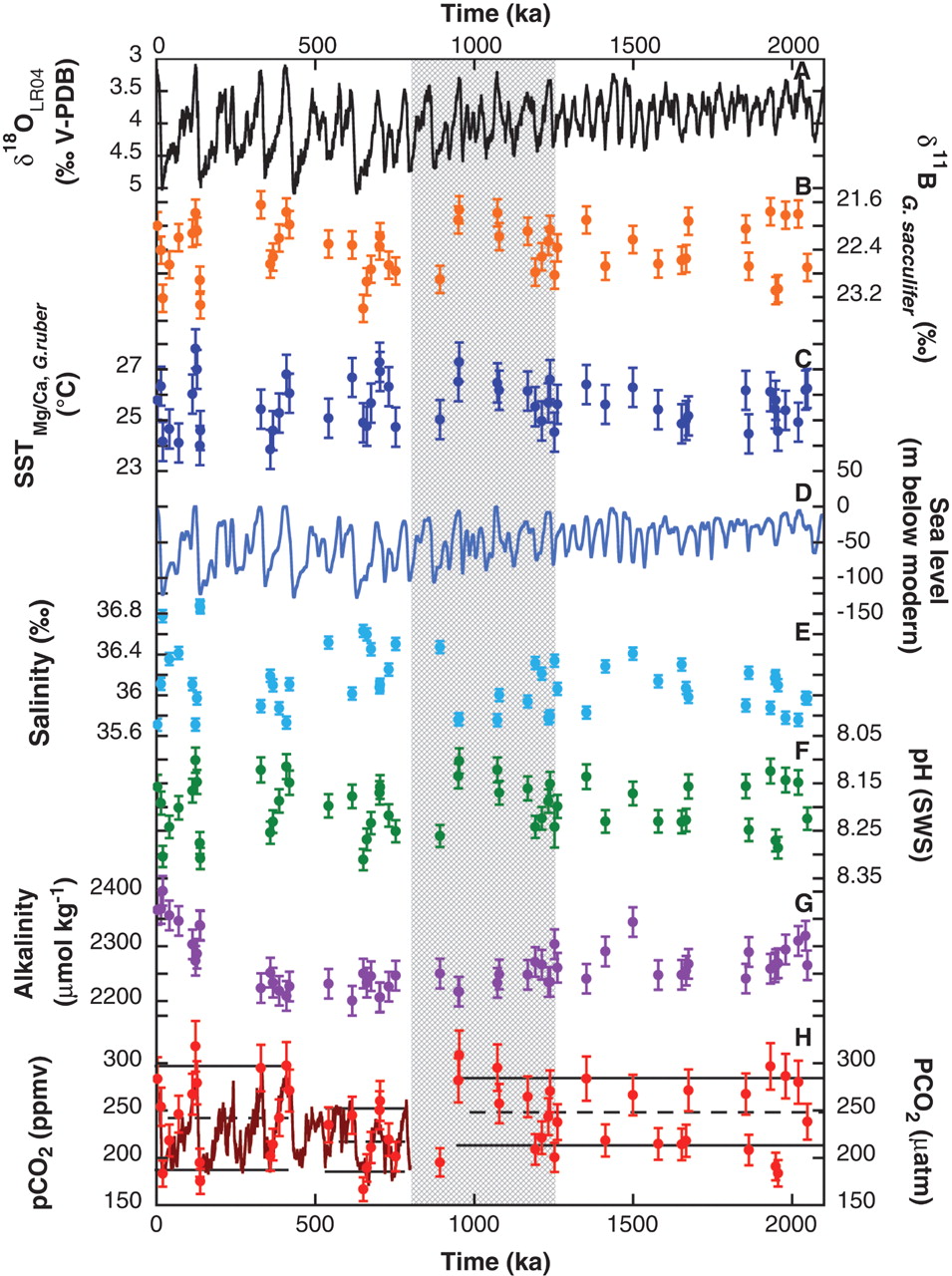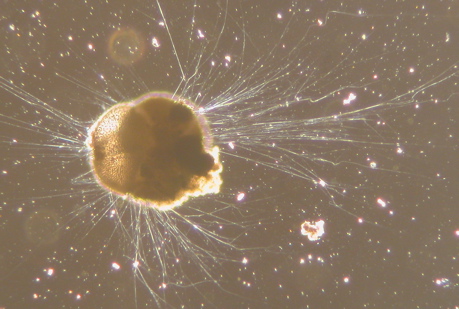Around 1.2 million years ago, a shift in global climate began that caused a change in the timing of the alternating warm and cold periods - called interglacials and glacials - that have persisted during the Pleistocene Ice Age. Prior to that time, ice age glacial periods lasted about 40,000 years but since ~700,000 years ago ice-age cycles have lasted for around 100,000 years. Orbital variations, called the Croll-Milankovitch cycles, do exert some forcing on the 100,000 year time scale, but it is relatively weak. Orbital cycles seem to many too feeble an explanation for the change in glacial-interglacial timing. Some scientists have attempted to attribute the timing shift to a drop in CO2 but a new study confirms that carbon dioxide levels were not the cause of the climate shift.
The dominant period of Pleistocene glacial cycles changed during the mid-Pleistocene from 40,000 years to 100,000 years, for reasons unknown to science. A new paper in the June 19, 2009, edition of Science investigates whether that shift could be attributed to changes in atmospheric CO2 levels. A group of researchers, led by Bärbel Hönisch, examined the factors that influenced the mid-Pleistocene transition (MPT) around 1250 to 700 thousand years ago. Here is the published abstract of the paper:
The dominant period of Pleistocene glacial cycles changed during the mid-Pleistocene from 40,000 years to 100,000 years, for as yet unknown reasons. Here we present a 2.1-million-year record of sea surface partial pressure of CO2 (PCO2), based on boron isotopes in planktic foraminifer shells, which suggests that the atmospheric partial pressure of CO2 (pCO2) was relatively stable before the mid-Pleistocene climate transition. Glacial PCO2 was ~31 microatmospheres higher before the transition (more than 1 million years ago), but interglacial PCO2 was similar to that of late Pleistocene interglacial cycles (<450,000 years ago). These estimates are consistent with a close linkage between atmospheric CO2 concentration and global climate, but the lack of a gradual decrease in interglacial PCO2 does not support the suggestion that a long-term drawdown of atmospheric CO2 was the main cause of the climate transition.The atmosphere is a mixture of gases and each gas has a partial pressure, which is the pressure that the gas would exert on a container if it alone occupied the container's volume. In other words, take a bottle full of air, remove all the gases other than CO2 and the pressure inside the bottle would be the partial pressure of carbon dioxide. The total pressure of a gas mixture is the sum of the partial pressures of each individual gas in the mixture. The world's oceans readily exchange CO2 gas molecules with the atmosphere. The extent to which CO2 dissolves in water is determined by its partial pressure and the chemical reactions of the dissolved carbon dioxide with other chemicals in the water. The sea surface partial pressure of carbon dioxide (PCO2) is the pressure of carbon dioxide in the air above the water which would be in equilibrium with the dissolved carbon dioxide.
The most accurate archive for atmospheric pCO2 comes from ancient air bubbles trapped in polar ice. Hönisch et al., report: "Contrary to the suggestion that pCO2 decreased toward the late Pleistocene, the earlier pCO2 amplitude and average were lower than in the more recent past." Unfortunately, ice core bubble data only goes back some 800,000 years and cannot be used as a source of data for the entire MPT. Instead of direct gas samples, the chemical composition of the shells from tiny sea creatures, which have died and become part of the ocean floor sediment, can be used to approximate the CO2 content of the ancient atmosphere.
Using these proxy records of past sea surface carbonic chemistry, constraints can placed on past atmospheric pCO2. Planktonic foraminifera, forams for short, are small floating animals with shells made of calcium carbonate (CaCO3). The boron isotopic composition of foram shells acts as a proxy for past seawater pH. This proxy is based on the equilibrium reaction between the two dominant isotopes of dissolved boron in seawater and the isotope fractionation or ratio between the two types. For explanations of how air bubbles are trapped, samples are analyzed and proxies work see chapter 13 of The Resilient Earth.
The researchers extend the existing 400-ky boron isotope record from Ocean Drilling Program (ODP) site 668B beyond the MPT to 2.1 million years ago. From this sediment core, they constructed a high-resolution oxygen isotope (δ18O) record from shells of the surface-dwelling forams. From these and other proxy data, the researchers were able to construct a 2.1 million year history of pCO2, sea surface temperature (SST) and other factors shown in the figure below.

From these data, Hönisch et al., were able to analyze the CO2 content of the atmosphere during the transition from 40,000 year to 100,000 year glacial periods. They found that CO2 levels were higher during glacial periods prior to the transition, which they considered consistent with warmer glacial SSTs, ice extents, and deep-sea temperatures. But since interglacial pCO2 was similar before and after the transition they concluded that changes in CO2 levels did not cause the change in ice age cycles. "We therefore conclude that CO2 was unlikely to have been the main driver of the MPT," the paper concludes.
What is the meaning of all this? It could be that human CO2 emissions will alter the existing rhythm of glacial-interglacial periods, but that seems unlikely. Once again the impact of CO2 as a driver of climate change is shown to be minimal, and that it is more likely an indicator that change has taken place than as the instigator of change. The Croll-Milankovitch cycles remain widely accepted as the forcing that decides the timing of glacial-interglacial periods. Data from the glaciation record are in strong agreement with this theory. In particular, during the last 700,000 years, the dominant period of glacial-interglacial oscillation has been 100,000 years, which corresponds to changes in Earth's eccentricity and orbital inclination. Global warming alarmists continue to stress the dangers of carbon dioxide while mounting scientific evidence indicates that CO2 plays only a minor roll in climate change.
Be safe, enjoy the interglacial and stay skeptical.





Reader Comments
to our Newsletter